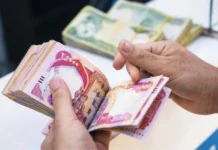Good Morning,
SEC’s Agenda Proposes Crypto Safe Harbors, Broker-Dealer Reforms
Regulatory shift could reduce oversight and give crypto firms room to operate in the U.S.
A Softer SEC Approach
The U.S. Securities and Exchange Commission (SEC) has unveiled a sweeping set of proposed rules that could reshape how digital assets are regulated. SEC Chair Paul Atkins announced roughly 20 rule proposals as part of the agency’s spring 2025 agenda, signaling a departure from the heavy-handed enforcement tactics of recent years.
“The agenda covers potential rule proposals related to the offer and sale of crypto assets to help clarify the regulatory framework for crypto assets and provide greater certainty to the market,” Atkins said. He added that the new approach would focus on “smart, effective, and appropriately tailored” regulation within statutory limits.
What’s in the SEC’s Agenda
Key items in the proposal include:
- Introducing exemptions and safe harbors for the offer and sale of crypto assets.
- Amending the Exchange Act to account for trading of digital assets on alternative trading systems (ATS) and national securities exchanges.
- Revising broker-dealer financial responsibility rules to lessen reporting and compliance burdens.
- “Modernizing” custody requirements under the Investment Advisers Act of 1940 to account for digital assets.
If implemented, these reforms could reduce legal risks for crypto companies, lighten regulatory overhead, and encourage innovation within U.S. markets.
Broker-Dealers in Focus
Broker-dealer rules have long been contentious in the crypto space, particularly requirements around Know Your Customer (KYC) and Anti-Money Laundering (AML). Many decentralized networks struggle to meet these standards due to the absence of centralized data collection. Adjusting these rules could ease operational pressures while maintaining compliance pathways.
From Gensler to Atkins: A Regulatory Reversal
The SEC’s shift comes less than a year after former Chair Gary Gensler’s resignation in January 2025. Under Gensler, the commission pursued aggressive enforcement, filing lawsuits and pushing stricter custody requirements. By contrast, Atkins has overseen the withdrawal of many of those initiatives, dropping investigations and signaling a more collaborative stance toward the industry.
Why This Matters
The SEC’s evolving agenda suggests that U.S. regulators may be moving toward a more balanced framework for digital assets. While proposals still face a lengthy approval process — including public comment and review — the direction under Atkins appears clear: easing barriers for crypto while preserving investor protections.
@ Newshounds News™
Source: Cointelegraph
~~~~~~~~~
Fintech Giant Stripe Rolls Out New Payments-Focused Layer-1 Blockchain for ‘Real-World Financial Services Applications’
Stripe and Paradigm launch Tempo, a blockchain optimized for high-speed stablecoin payments.
Introducing Tempo
Stripe, in collaboration with Paradigm, has unveiled Tempo, a new layer-1 blockchain designed specifically for payments. Announced by Stripe CEO Patrick Collison, Tempo promises to support global financial services with a throughput exceeding 100,000 transactions per second and sub-second finality.
“We think of Tempo as the payments-oriented L1, optimized for high-scale, real-world financial services applications,” Collison said.
Stablecoin Fees and User Experience
Unlike many blockchains that require native tokens for transaction fees, Tempo will allow fees to be paid directly in fiat-pegged stablecoins. This feature is aimed at simplifying user adoption and enhancing the overall financial services experience.
Backed by Major Partners
Tempo is being incubated as an independent company, led by Paradigm co-founder Matt Huang. The initiative has already secured high-profile partners including:
- Anthropic
- Deutsche Bank
- DoorDash
- OpenAI
- Revolut
- Shopify
- Standard Chartered
- Visa
These firms will contribute to the blockchain’s design and deployment, ensuring it meets the needs of both traditional finance and next-generation digital services.
Technology and Features
Tempo is being built with:
- A diverse validator set, with a roadmap toward permissionless validation.
- Compatibility with the Ethereum Virtual Machine (EVM).
- An automated market maker (AMM) for stablecoins to streamline liquidity.
The blockchain is currently in private testing, focusing on use cases such as cross-border payments, remittances, microtransactions, and AI-driven payments.
Why This Matters
The launch of Tempo marks a major step in the convergence of fintech and blockchain. By targeting payments rather than trading, Stripe and Paradigm are positioning Tempo as a global backbone for financial services — one that could rival both legacy payment networks and existing crypto infrastructure.
@ Newshounds News™
Source: Daily Hodl
~~~~~~~~~
We Are Going to Take XRP to New Heights, Says Flare Founder
Flare CEO Hugo Philion outlines bold plans to unlock billions in XRP liquidity through DeFi.
Taking XRP to New Heights
Flare co-founder and CEO Hugo Philion has doubled down on his mission to expand XRP’s role in decentralized finance. In a Thursday post, Philion said his team is “going to take XRP to new heights,” underscoring Flare’s vision to turn XRP into a yield-bearing asset.
Philion highlighted XRP as the core asset and FLR as the enabling token, positioning Flare as the bridge that connects XRP with DeFi infrastructure.
Building the Framework: From Staking to Firelight
Flare’s plans have gained traction throughout 2025:
- March – Philion announced low-risk staking opportunities for XRP holders, offering rewards while minimizing validator risks.
- June – The project unveiled Firelight, a liquid staking protocol that lets XRP holders wrap tokens into FXRP and mint stXRP for use in DeFi. Partners included VivoPower, which committed $100 million in XRP, and Uphold, a launch collaborator.
By August, Flare revealed that Firelight could deliver annual yields of 4–7% on XRP, a breakthrough for an asset that traditionally generated no yield.
A Non-Custodial, DeFi-Ready System
Firelight is designed as a decentralized and non-custodial protocol, addressing risks seen with centralized exchanges. With wrapped XRP (FXRP) secured on Flare and represented by stXRP, holders can:
- Participate in lending and borrowing.
- Mint stablecoins.
- Access Ethereum-style DeFi markets thanks to Flare’s EVM compatibility and oracle integrations.
This approach could unlock over $100 billion in previously idle XRP liquidity, giving XRP new utility beyond cross-border payments.
Community and Market Reactions
Legal analyst Bill Morgan has long argued that XRP needs to expand its use cases. “XRP has to work harder to grow its utility beyond payments,” he said earlier this year. Firelight, he noted, may be the path forward.
Market watchers are also speculating on price implications. EasyA co-founder Dom Kwok emphasized that XRP, which once peaked at a $200 billion market cap without DeFi integration, could achieve four-figure valuations if it experiences a true DeFi breakout driven by institutional adoption, ETFs, and stablecoin payments.
Why This Matters
Flare’s innovations could mark the beginning of a new era for XRP. By enabling staking, lending, and stablecoin issuance, Firelight positions XRP as a DeFi-ready asset and challenges perceptions of it as solely a payments token. If institutions continue to adopt, XRP may finally step into the broader world of on-chain finance.
@ Newshounds News™
Source: The Crypto Basic
~~~~~~~~~
Seeds of Wisdom Team RV Currency Facts Youtube and Rumble
Newshound’s News Telegram Room Link
Follow the Roadmap
Follow the Timeline
Seeds of Wisdom Team™ Website






